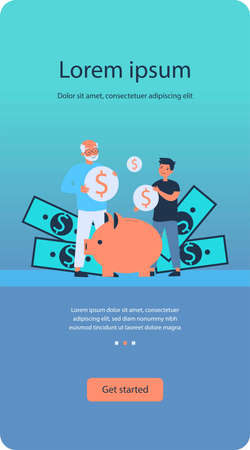Overview of Diversity and Inclusion in the UK Creative Freelance Sector
The UK’s freelance creative sector has long been recognised as a powerhouse of innovation, adaptability, and cultural expression. In recent years, diversity and inclusion (D&I) have come to the forefront of industry conversations, reflecting broader societal movements and an increasing demand for authentic representation. Today, D&I is more than a compliance checkbox—it is a driving force for growth and creativity across disciplines such as design, advertising, writing, music, photography, and digital content creation.
Statistics from organisations like Creative UK and the Office for National Statistics reveal that freelancers now make up nearly 50% of the entire creative workforce. Yet despite this dominance, representation gaps persist: only 12% of creative freelancers identify as coming from Black, Asian or ethnically diverse backgrounds, and disabled creatives report significant barriers to entry. The gender pay gap also remains stubbornly high within certain creative fields.
However, the definition of diversity and inclusion within the UK freelance landscape is evolving rapidly. Where once it was limited to race and gender, it now encompasses age, neurodiversity, socio-economic background, sexual orientation, disability status, and even regional identity. For brands and agencies seeking authentic British voices and perspectives, these nuances are increasingly critical—not just for ethical reasons but for commercial success as well.
As Gen Z enters the workforce with high expectations around equity and accessibility, clients are demanding more inclusive teams and outputs. Meanwhile, grassroots networks and advocacy groups are pushing for systemic change—challenging outdated gatekeeping mechanisms and championing new pathways into creative work for underrepresented talent. This shift is helping to reframe D&I not as a challenge but as an essential ingredient in the ongoing vibrancy and relevance of Britain’s creative industries.
2. Barriers and Challenges for Underrepresented Groups
The UK freelance creative sector is often lauded for its flexibility and innovation, yet for many underrepresented groups, it remains a landscape riddled with unique barriers. These obstacles go beyond mere talent or ambition—they are deeply rooted in structural inequalities that influence everything from initial access to sustainable career progression.
Access to Opportunities
For minority creatives, gaining entry into the right circles can be a significant challenge. Many freelance opportunities are distributed through informal networks or word-of-mouth recommendations, which often exclude those without established industry connections. This lack of visibility hampers the ability of talented individuals to showcase their work, resulting in a cycle where the same voices are repeatedly given the platform.
Pay Gaps
The issue of unequal pay persists across the UK freelance scene. Research consistently shows that Black, Asian, and ethnically diverse freelancers earn less than their white counterparts. Similarly, gender-based pay disparities remain prevalent, with women—particularly women of colour—often quoting lower rates or being offered less for similar projects.
| Group | Average Day Rate (£) | Percentage Lower Than Industry Average |
|---|---|---|
| White British | £300 | 0% |
| Black British | £230 | -23% |
| British Asian | £240 | -20% |
| Women (all backgrounds) | £210 | -30% |
Visibility and Recognition
Diverse voices are frequently underrepresented in mainstream campaigns and creative projects. This lack of representation perpetuates stereotypes and makes it even harder for minority freelancers to be recognised as credible contributors within their fields. The absence of visible role models further discourages aspiring creatives from non-traditional backgrounds from pursuing freelance careers in the UK.
Unequal Networking and Industry Gatekeeping
The UK’s creative industries still rely heavily on personal introductions and exclusive events—spaces where underrepresented groups may feel unwelcome or overlooked. Such informal gatekeeping creates a barrier to building meaningful professional relationships, accessing mentorship, and gaining exposure to high-profile projects.
Tackling Systemic Challenges Together
Acknowledging these obstacles is the first step towards fostering genuine diversity and inclusion in the UK’s freelance creative community. Only by addressing access gaps, pay inequities, visibility issues, and networking disparities can we move towards a more equitable future where all talent is given the chance to thrive.

3. Benefits of an Inclusive Freelance Culture
Fostering diversity and inclusion within the UK freelance creative sector is more than a tick-box exercise—it’s a strategic advantage for brands, agencies, and freelancers alike. When teams are built from a rich tapestry of backgrounds, perspectives, and lived experiences, the creative output becomes distinctly more innovative and relevant. This diversity drives fresh thinking and unique ideas that resonate with today’s multicultural British audience.
Driving Innovation Through Varied Perspectives
Diverse freelance networks provide access to a wider range of voices, leading to solutions that break free from the echo chamber effect. British brands embracing this approach often find themselves at the forefront of trend-setting campaigns, as they tap into insights that might otherwise go unnoticed in homogenous environments.
Enhanced Client Resonance and Market Reach
Clients increasingly demand authentic representation and cultural sensitivity in their campaigns. Freelancers from different ethnicities, genders, abilities, and regions can craft messages that feel genuine and relatable to diverse customer bases across the UK. This authenticity not only builds trust but also opens doors to new markets—whether it’s connecting with Gen Z in Manchester or reaching diaspora communities in London.
Brand Reputation and Talent Attraction
An inclusive approach signals to both clients and potential collaborators that your agency or brand stands for something meaningful. This strengthens reputation, fosters loyalty, and attracts top-tier talent who value progressive workplaces. For freelancers themselves, working in inclusive environments means fairer opportunities and increased job satisfaction—ultimately leading to higher quality work for everyone involved.
4. UK Initiatives and Policies Driving Change
Diversity and inclusion have become central themes in the UK’s creative freelance sector, thanks to an evolving landscape of government schemes, non-profit programmes, and proactive industry bodies. These stakeholders are not only raising awareness but also driving tangible change through funding, mentorship, advocacy, and policy reform. Here’s a closer look at how these initiatives are shaping opportunities for creatives across Britain.
Government Schemes Empowering Freelancers
The UK government has introduced several schemes aimed at supporting diverse talent within the freelance creative workforce. Key examples include:
| Scheme | Focus Area | Impact |
|---|---|---|
| Creative Industries Sector Deal | Investment in skills development and diversity outreach | Expanded training for underrepresented groups |
| Access to Work Fund | Support for disabled freelancers | Financial assistance and workplace adaptation grants |
| BAME Creative Grant Programmes | Opportunities for Black, Asian, and Minority Ethnic creatives | Increased representation in media and arts projects |
Non-Profit Organisations Making a Difference
Grassroots movements and established charities play a vital role in building inclusive networks and providing resources. Notable organisations include:
- Creative Access: Connecting young people from underrepresented backgrounds to paid internships in the creative sector.
- Arts Emergency: Offering mentoring and support for those without existing industry connections.
- D&AD Foundation: Delivering free workshops and events focused on creative equity.
Industry Bodies Championing Inclusion
The UK’s leading industry associations actively campaign for greater diversity among freelancers. For example:
- The Advertising Association’s ‘All In’ Initiative: Promotes inclusive recruitment practices within advertising agencies.
- The British Fashion Council: Advocates gender, ethnic, and socio-economic diversity through scholarships and mentoring programmes.
- The Creative Industries Federation: Conducts research and lobbies for policy changes that benefit marginalised voices.
Tangible Outcomes Across the Sector
This collective effort is yielding real progress—more accessible job boards, targeted grants for minority-led projects, and inclusive judging panels at major awards. However, sustained commitment is essential to ensure these policies translate into lasting cultural shifts across Britain’s freelance creative economy.
5. Practical Steps for Freelancers and Brands to Foster Inclusion
Diversity and inclusion cannot thrive on intention alone; they require consistent, practical action. For UK freelancers and creative organisations, embedding these values into daily work is not just a moral imperative but also a strategic advantage. Here’s how both individuals and brands can make tangible progress.
Use Inclusive Language in Every Communication
Language shapes perception. For creatives, this means being mindful of words used in pitches, emails, briefs, and campaigns. Opt for gender-neutral pronouns where possible, avoid idioms or references that may alienate non-UK or minority backgrounds, and address people by their chosen names. Brands should review all internal and external communications for unconscious bias and offer training to keep everyone updated with best practices rooted in British cultural awareness.
Broaden Recruitment Channels
Traditional recruitment methods often reinforce existing networks, inadvertently excluding diverse talent. Freelancers should seek out platforms dedicated to underrepresented groups in the UK creative sector—such as Creative Access or The Dots—and highlight inclusive credentials on their profiles. Brands should go beyond word-of-mouth or alumni networks: partner with community organisations, advertise roles across a broader range of channels, and ensure selection panels are themselves diverse.
Collaborate Authentically Across Differences
Collaboration thrives when everyone feels empowered to contribute. Creatives can suggest regular check-ins to surface different perspectives early on and encourage open dialogue about working preferences shaped by culture or identity. Organisations should foster psychologically safe environments—where questioning norms is encouraged—and actively invite feedback from freelancers about their experience working with the brand.
The Role of Allyship in Everyday Practice
Allyship is more than a buzzword—it’s about everyday actions. Freelancers can amplify the voices of peers from marginalised backgrounds by sharing their work or inviting them into projects. Brands can formalise mentorship schemes that pair established creatives with those at the start of their journey, particularly those facing systemic barriers in the UK market. Publicly supporting industry-wide initiatives—like Black History Month or Pride—demonstrates ongoing commitment beyond one-off statements.
Embedding Inclusion as Standard Practice
Whether you’re pitching ideas from Manchester or commissioning campaigns in London, fostering diversity and inclusion means integrating these steps into your workflow—not treating them as an afterthought. By taking proactive measures around language, recruitment, collaboration, and allyship, both freelancers and brands will not only reflect modern Britain but also unlock richer creative outcomes for everyone involved.
6. Case Studies: Success Stories from the UK Creative Community
The UK’s freelance creative sector has seen remarkable transformation thanks to a growing commitment to diversity and inclusion. Here, we spotlight some inspiring case studies where embracing different perspectives has not only driven business growth but also fuelled cultural innovation and standout creative work.
Shifting the Narrative: The Rise of Diverse Storytelling
London-based creative agency Mother London partnered with a collective of Black British illustrators and writers for their “We Are Here” campaign. This inclusive approach resulted in a series of powerful visuals and narratives that resonated nationwide, earning both industry acclaim and increased client engagement. By opening doors to underrepresented voices, Mother London didn’t just tick boxes—they created culturally relevant work that sparked conversation and connection across communities.
Business Growth through Inclusive Collaboration
Manchester’s Creative Allies Network, a freelance hub focused on LGBTQ+ creators, collaborated with local brands during Manchester Pride. Their diverse team brought authentic representation into campaigns, leading to a 30% uplift in social engagement for participating businesses. Brands benefitted from fresh ideas rooted in lived experiences, while freelancers gained high-profile platforms to showcase their talents—demonstrating how inclusion directly contributes to commercial success.
Cultural Impact: Empowering the Next Generation
In Scotland, the initiative Diverse Voices in Design pairs emerging BAME designers with established studios on freelance projects. Not only has this boosted portfolio development for new talent, but it’s also resulted in award-winning branding solutions for clients seeking a modern, multicultural edge. These collaborations have set new benchmarks for creativity and provided role models for aspiring designers across the UK.
The Ripple Effect of Inclusive Creative Practice
These stories illustrate that when UK agencies, brands, and freelancers invest in diversity, everyone wins—from breakthrough creative ideas to measurable business growth and lasting cultural impact. As more freelance creatives champion inclusion, the UK’s reputation as a global centre for original thinking and cultural vibrancy continues to flourish.


